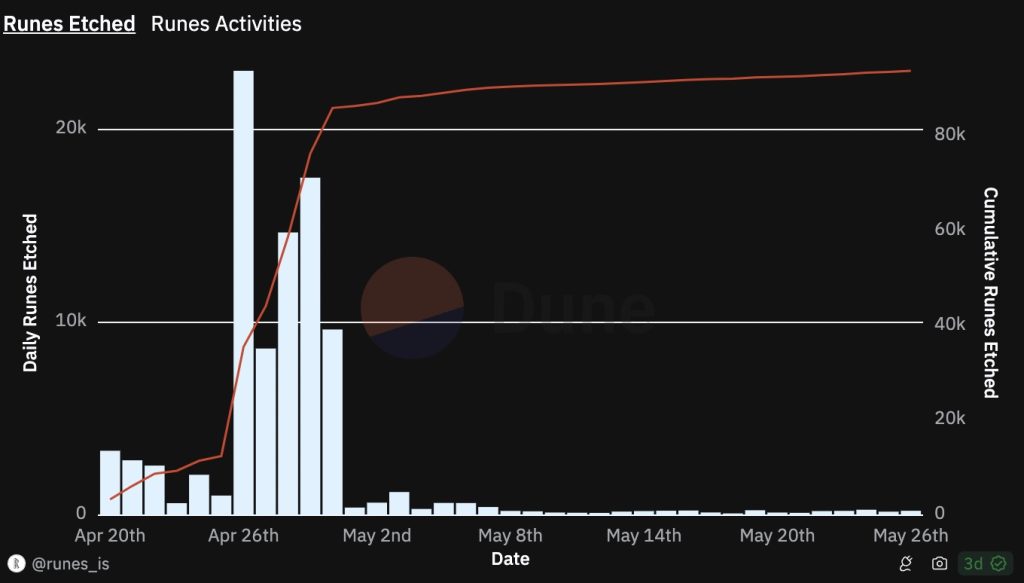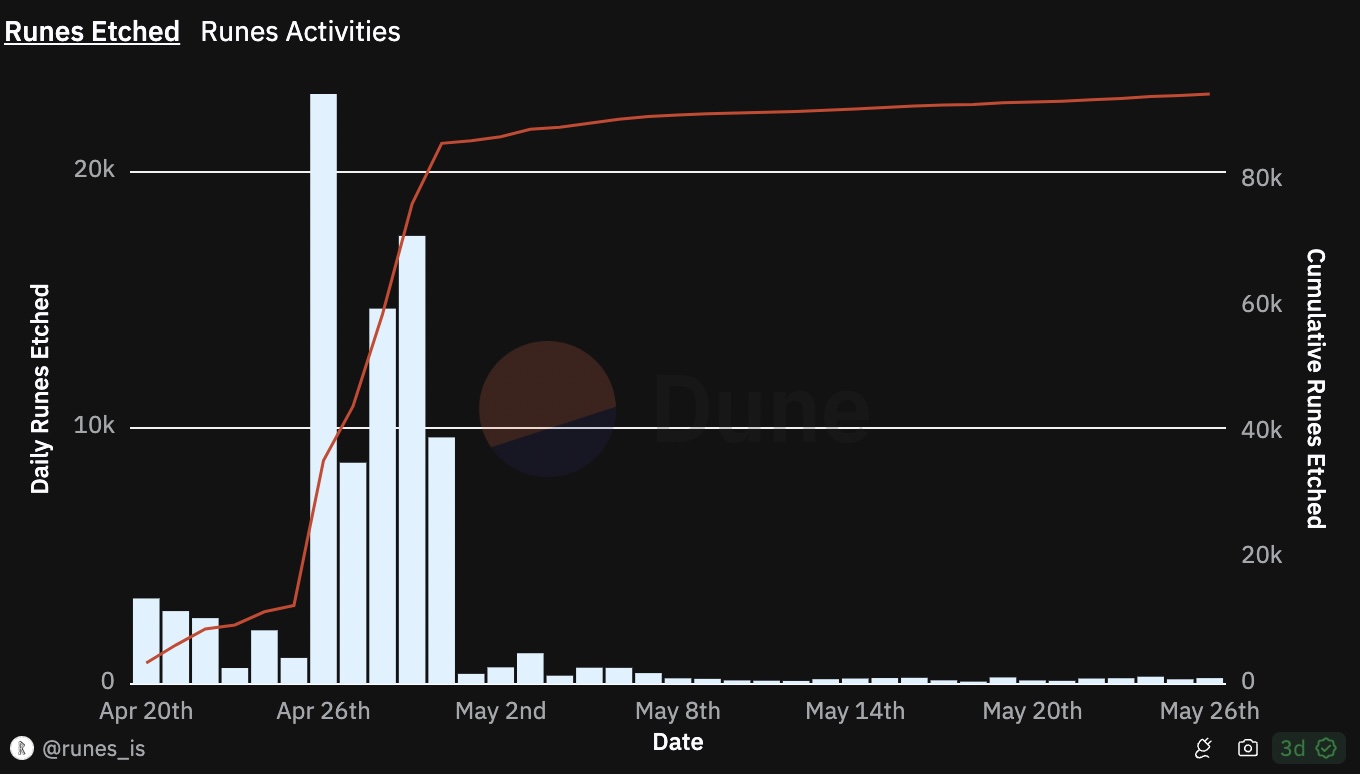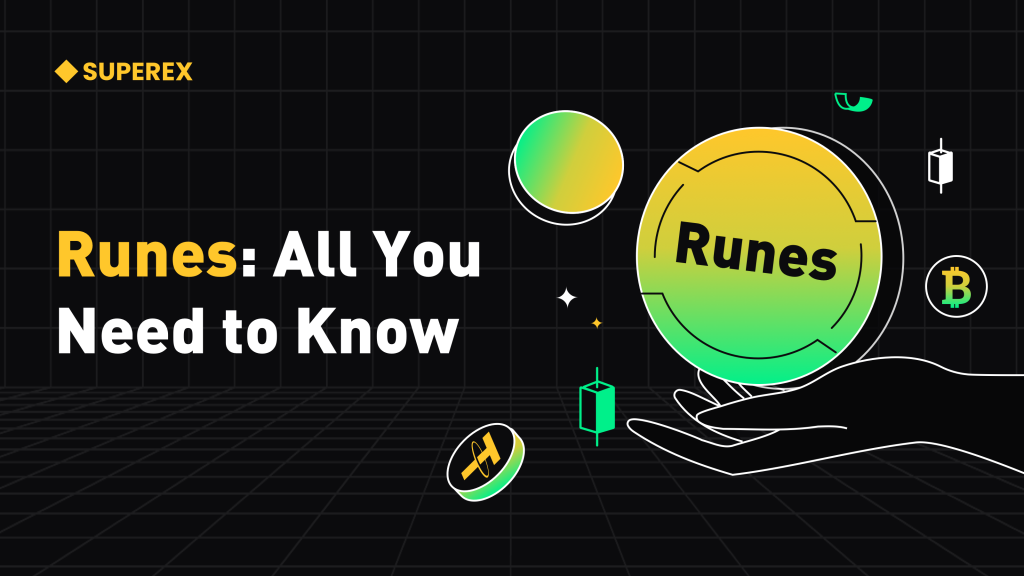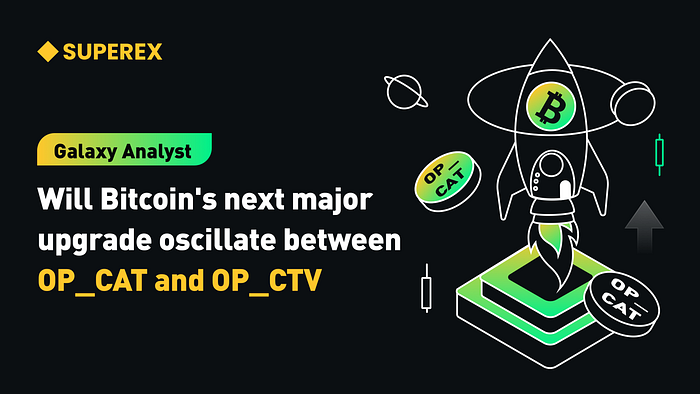Bitcoin's OP_CAT proposal could transform the Bitcoin blockchain

The launch of Runes of Bitcoin and the emergence of OP-CAT could redefine the blockchain’s ecosystem as early as 2026.

History is seeded with pivotal moments. Some slip by with barely a notice, only to be dusted off and spotlit by historians decades later, while others roar into existence with all the fanfare of a holiday parade. By the clamor alone, the launch of the Runes token standard would seem to fall in the latter category.
On April 19, the new protocol — designed to facilitate more efficient generation of Bitcoin-native fungible tokens and coincided with Bitcoin’s (BTC) fourth scheduled halving — prompted a flurry of investment activity. Over 7,000 Runes tokens were minted in the first two days post-launch. As of writing, more than 91,000 Runes have been etched on Bitcoin with an associated $4.5 million in transaction fees paid to miners. At the peak of the mid-April furor, demand drove transaction fees to an unprecedented high of $128.45.
At the time, more than a few analysts wondered if we were seeing a repeat of 2021’s “summer” for decentralized finance (DeFi), when the launch of several decentralized apps and tokens led to rampant activity and a sudden flood of liquidity into the Ethereum blockchain. But if so, autumn came rather quickly; in mid-May, the number of Runes etchings free-fell by 99%.

So, was the launch of Runes really a historical moment for Bitcoin DeFi (BTCFi) or merely an expression of momentary interest? It may have been a bit of both.
The Runes protocol’s facilitation of efficient token generation could prove instrumental in enabling liquid staking and, by extension, investment activity, layer-2 expansion, and DeFi innovation. But make no mistake: Runes alone is just one advancement among many. Over the last decade, a BTCFi revolution has been quietly in the works — and, pending the likely passage of the OP_CAT Bitcoin Improvement Proposal (BIP) in 2025, seems poised to spark unprecedented growth for Bitcoin.
Related: The Runes protocol will ignite a new season for Bitcoin after the halving
But before we can speculate on what’s to come, we must consider where we currently stand. Mainstream adoption has three fundamental pillars: visibility, versatility, and approachability. As the first and foremost cryptocurrency, Bitcoin commands attention and respect but (at least for the moment) falls short in the other two categories.
A temporary hurdle: innovators tackle BTCFi’s capital inefficiency and limited scalability
Bitcoin is capital-effective but not capital-efficient. Despite its high market cap, premier status as a store of value, and significant investor buy-in, BTC is critically underutilized as to an investment asset. As of early April, approximately 65% of the BTC supply hadn’t moved for more than a year. That was 10% lower than in January, which coincided with the launch of multiple exchange-traded funds. While investors are beginning to put their BTC to work, more than half are still committed to hunkering down.
To be fair, BTC investors have had plenty of reasons to be conservative, given the lack of sustainable yield opportunities, the absence of institution-friendly yield products, and the unknown risks of moving or deploying assets. Enter our slow undercurrent of revolution — a slow culmination spanning years of persistent determination to evolve Bitcoin from a store of value into a vibrant financial ecosystem in its own right.
Related: 3 trends to think about before Bitcoin’s bull run resumes
Efforts to date focus on two major priorities: making Bitcoin more programmable and improving capital efficiency. By design, the current Bitcoin network does not offer smart contract functionality. While this reduces complexity and the risk of security breaches, it also prevents the use of logical loops and conditions, thus constraining dApp development and scaling. The blockchain’s high on-chain transaction fees and — until Runes — inefficient tokenization protocols further hindered active, yield-generating investment activities.
Bitcoin’s DeFi ecosystem may be nascent, but it’s undeniably rising. In addition to basic DeFi primitives like DEXs, Money Markets, Vaults, Oracles, and Stablecoins, BTCFi encompasses solutions intended to solve the existing pitfalls of BTC, the asset, and Bitcoin, the network. General and purpose-built L2s such as Stacks, Merlin and B2 are growing their own BTCFi ecosystems. Projects like Babylon are propelling DeFi development by bridging the gap between Proof-of-Work and Proof-of-Stake models.
With all this in context, the emergence of BTCFi and subsequent “Bitcoin DeFi Summer” feels inevitable, if long-awaited. But advocates will likely need to wait another year — or even two, accounting for innovation time — before the season kicks off.
OP_CAT may ins;ir to usher in a new BTCFi renaissance — if it passes in 2025
If Runes arrived in a cacophony, the OP_CAT Bitcoin Proposal arrived with a whisper. Expected to undergo review in 2025, this landmark document would reinstate smart contract functionality that hasn’t been available on Bitcoin since Satoshi Nakamoto himself disabled it in 2010. OP_CAT would empower logical loops and conditionals, thus allowing the creation of rules or conditions on how Bitcoin can be spent — and opening the door to many development possibilities, including Layer 2s, Smart Contracts, and more.
If OP_CAT passes, it will fundamentally change how people leverage Bitcoin and usher in a new renaissance for projects seeking to make BTC more programmable or capital-efficient. Innovators will finally have a secure avenue to adapt Bitcoin programmability for critical use cases such as DeFi, scaling, and chain interoperability, thus leading to more plentiful, varied, and lucrative investment opportunities.
At that point, we’ll officially gain our second pillar for mass adoption. Bitcoin will continue to attract attention as an area for DeFi expansion. This, along with the development of a secure and robust infrastructure, could lead to tremendous amounts of capital flowing into BTC yield-generating protocols. Hurdles exist, of course; for example, as individual L2 and DeFi ecosystems emerge and grow, they will form their own communities and leverage their own version of BTC — which will inevitably lead to the fragmentation of liquidity and yields.
Approachability is also a concern. For all its appeal and potential, cryptocurrency can feel intimidating and inaccessible to individual investors. While institutional players have committed to the cause, more work needs to be done to educate and engage the general public. Many Bitcoin holders and potential users may be familiar with DeFi usage or key concepts (i.e., bridging). Education and concept abstraction will be important priorities for ecosystem advocates who intend to encourage mainstream adoption.
The real BTCFi Summer may be a couple of years away, but if history tells us anything, it would be that we need to start enabling our future users now. While these quiet moments of advancement and preparation may not all command headlines like Runes’ debut, all of them matter. Much like the functioning of the blockchain, making history is a collective endeavor; individuals must step up and contribute to the cause. The pieces are in play, change is underway, and our collective advocacy for the cause is strong — the only question that remains is how soon we’ll see our vision for BTCFi come to pass.
Mikhil Pandey is a guest columnist for Cointelegraph and the co-founder and chief strategy officer at Persistence One, a layer-1 blockchain. He holds a bachelor’s degree in electronics engineering from the University of Mumbai.
This article is for general information purposes and is not intended to be and should not be taken as legal or investment advice. The views, thoughts, and opinions expressed here are the author’s alone and do not necessarily reflect or represent the views and opinions of Cointelegraph.






Responses